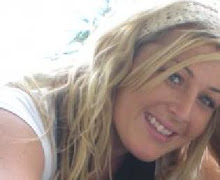PowerPoint
PowerPoint slide shows are a very useful tool that can be used in the classroom to engage the learners in topics and also find out their prior knowledge. This can be done by creating a presentation involving a quiz that the students complete to reflect on learning and for the learning manager to be able to see what they already know. In particular, I would use PowerPoint in a Technology unit, where the learners have to create International stores to show the students what they can do with it. A photo story could be created with hyperlinks linking to Google Earth and other internet sites where the students have gathered information to display climate, foods (recipes), clothing (designs) and other cultural traits.
This PowerPoint presentation would be done as a class and then the students would gather into their groups to complete their own slideshow. A reference page would need to be displayed and the students would need to be taught how to hyperlink pages to the sites that they received the information to assure no copyright laws are breeched. In the Science unit, the students could use PowerPoint to display their experiments and use it as a reflection and for assessment. This e.learning tool is very useful to engage students yet still adhere to the learning outcomes they need to achieve. All learners, no matter the diversity can complete this task as those who are below expectation can perform basic operations, yet the learners that need challenging can apply more complex presentations.
Blogs
Blogs have been used in my classes learning activities for the past year. The students have established their own blog page where they upload and link their work and reflect on their learning journey through blogs. For my teaching, I have ensured the students use blogs in their group work Technology task by reflecting on their daily learning’s and post to other members of their group ideas and group learning. The learners will be able to see their group’s page and see what they have done and what they still have to do. Blogs are also useful in group tasks to draw the learners together through this form of communication.
Digital Storytelling
The Engagement Theory (Keirsley & Shneiderrman, 1999) sits well with digital storytelling as the learners can engage in the activity and work together and feed off each others ides to develop a digital story. With the use of digital cameras and research, the students will be able to use this e.learning tool to create a summary of their learnings in the Technology and the Science unit. The Science unit could see the students using this as a journal description where they are engaged in the learning to produce a digital story to display their learning’s. The learning manager could create a digital story from the work from the last semester to display to the students what can be done and how it is created. This would allow both the learner and the learning manager to engage in new education of this e.learning tool.
References
Keirsley, G., & Shneiderrman, B. (1999). Engagement Theory. Viewed on 26/09/2009 from:
http://home.sprynet.com/-gkearsley/engage.htm
Wikis
In particular, I have created a e.learning lesson that will focus on genetic engineering using a Wiki. I created this page as a student in the class’s grandfather was to undergo a liver transplant and the topic of discussion arose as to what would happen and then we were discussing genetic engineering. The learners were really curious as to what this was so I created a learning experience for them to complete in their own time about genetic engineering. As it was not part of the Science unit plan, it still had learning outcomes that needed to be achieved (see geneticengineering08.wetpaint.com). This Wiki site I created and the students all went on to learn about what genetic engineering was and what they needed to achieve in the task. I went through instructions in the classroom as to how they follow the links on the left hand column of the page. I wish that I knew how to put a Voki Avatar on the introduction page but I created one and then had difficulty uploading it onto my Wiki page.
The learners were all engaged and had the option to complete the activity in class time at the computer lab and then could access it form home. They were all very enthusiastic as it was a topic they were interested in and not particular learning that was planned to discuss. I was challenged to create this page and the learners were also challenged to complete the task. The learners that had difficulty were paired up and shown what to do by me and the learners that needed challenging; an extension activity was offered to ensure that this learning task catered for all learning diversities.
Flickr
Each student was instructed to gather some photos of themselves and set up a Flickr account. The learners were engaged in this topic and all of the learners wanted to make many interesting changes to their photos. They then saved their photos and were instructed and demonstrated how to upload the photos onto their blog pages. This was done so that the learners were aware of how to complete this for when they complete their Technology and Science journals; they have access to their photos and can use them as evidence for their assessment.
Thursday, October 1, 2009
Subscribe to:
Comments (Atom)
